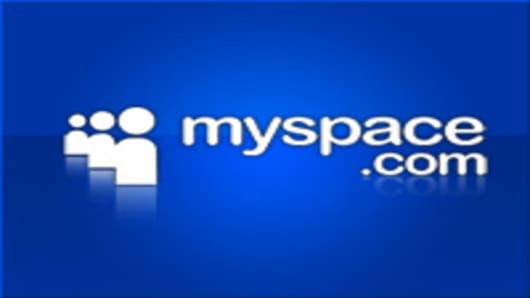The redesign is intended to address a problem of social networking sites, which is that many user pages have the aesthetic appeal of a 14-year-old’s high-school locker. But there are still many questions left about the advertising value of social networks.
In the last few months, the bloom has come off social networking’s rose. MySpace and its chief competitors, Facebook and Bebo, all have ambitious plans for making money but not enough proof that the plans are working.
“The jury’s still out on MySpace’s ability to monetize,” said Michael Nathanson, an analyst at Sanford C. Bernstein & Company.
The sites seem desirable to advertisers based on the traffic they receive. MySpace has an American audience of 73 million, and Facebook counts 36 million, according to comScore. (Worldwide, Facebook tied MySpace for the first time in April, averaging about 115 million users for each site.) Users spend hours on the sites.
But because MySpace commands a majority of all the money spent on social networking, it is viewed as a bellwether for the growing industry.
On a conference call last month, Peter Chernin, president and chief operating officer for the News Corporation, toned down the grandiose expectations for social networking advertising and acknowledged that selling spots on personal profile and group pages is not easy.
Social networking represents an “entirely new form of Internet activity,” Mr. Chernin said.
When MySpace’s parent, Fox Interactive Media, announced a three-year, $900 million advertising pact with Google in 2006, analysts started placing big bets that social networking would be a major new revenue stream. While the Web is becoming more social, it is hard to wring profits from it.
Indeed, the balloon of unrealistic prospects is losing air. The attitude change was first detected at the end of January when, one year into its $900 million pact with MySpace, Google said that social networking inventory was not earning money as well as expected. (More recently, Google said the situation was improving.)
The attitude change was confirmed in April when Fox Interactive Media said that it would miss its revenue target. By then, the chief revenue officer for the unit had been dismissed.
Mr. Nathanson, the analyst, said that MySpace’s perceived shortfall had been frustrating. “We don’t have much conviction in the long-term ability to grow this business based on what we’ve seen lately,” he said.
Other analysts hold a more bullish view. Anthony DiClemente of Lehman Brothers recommended the News Corporation’s stock on Friday partly because of MySpace’s 25 to 30 percent year-over-year revenue growth.
MySpace, naturally, agrees with the more optimistic view.
“We’re seeing the dollars come in,” said Jeff Berman, who was promoted to president of sales and marketing for MySpace in April, when Fox Interactive Media’s sales force was rearranged. Revenue per user is said to be up 50 percent over last year, but the site is still making only about $6 to $7 per user per year.
EMarketer estimates that MySpace will post $755 million in revenue in the fiscal year ending June 30.
MySpace would not comment on the estimate. About a third of the revenue is expected to come from the Google ad pact. For the year, Facebook is estimated to earn $265 million in ad revenue.


